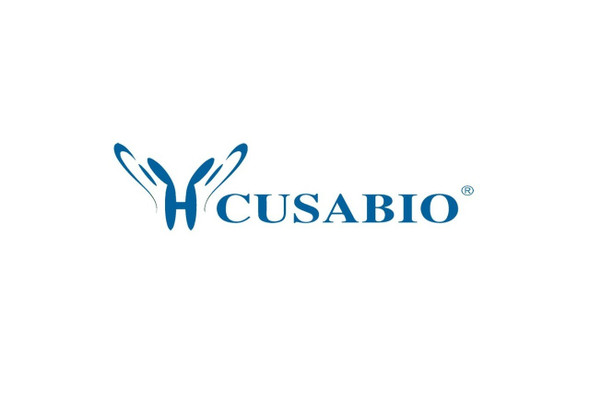Cusabio Rattus norvegicus Recombinants
Recombinant Rat Regucalcin (Rgn) | CSB-EP019630RA
- SKU:
- CSB-EP019630RA
- Availability:
- 13 - 23 Working Days
Description
Recombinant Rat Regucalcin (Rgn) | CSB-EP019630RA | Cusabio
Alternative Name(s): Gluconolactonase (EC:3.1.1.17) Short name: GNL Senescence marker protein 30 Short name: SMP-30 Smp30
Gene Names: Rgn
Research Areas: Signal Transduction
Organism: Rattus norvegicus (Rat)
AA Sequence: MSSIKIECVLRENYRCGESPVWEEASKCLLFVDIPSKTVCRWDSISNRVQRVGVDAPVSSVALRQSGGYVATIGTKFCALNWEDQSVFILAMVDEDKKNNRFNDGKVDPAGRYFAGTMAEETAPAVLERHQGSLYSLFPDHSVKKYFDQVDISNGLDWSLDHKIFYYIDSLSYTVDAFDYDLPTGQISNRRTVYKMEKDEQIPDGMCIDVEGKLWVACYNGGRVIRLDPETGKRLQTVKLPVDKTTSCCFGGKDYSEMYVTCARDGMSAEGLLRQPDAGNIFKITGLGVKGIAPYSYAG
Source: E.coli
Tag Info: N-terminal 10xHis-SUMO-tagged
Expression Region: 1-299aa
Sequence Info: Full Length
MW: 51.9 kDa
Purity: Greater than 85% as determined by SDS-PAGE.
Relevance: Gluconolactonase with low activity towards other sugar lactones, including gulonolactone and galactonolactone. Catalyzes a key step in ascorbic acid (vitamin C) biosynthesis. Can also hydrolyze diisopropyl phosphorofluoridate and phenylacetate (in vitro). Calcium-binding protein. Modulates Ca2+ signaling, and Ca2+-dependent cellular processes and enzyme activities.
Reference: "Senescence marker protein 30 functions as gluconolactonase in L-ascorbic acid biosynthesis, and its knockout mice are prone to scurvy." Kondo Y., Inai Y., Sato Y., Handa S., Kubo S., Shimokado K., Goto S., Nishikimi M., Maruyama N., Ishigami A. Proc. Natl. Acad. Sci. U.S.A. 103:5723-5728(2006)
Storage: The shelf life is related to many factors, storage state, buffer ingredients, storage temperature and the stability of the protein itself. Generally, the shelf life of liquid form is 6 months at -20?/-80?. The shelf life of lyophilized form is 12 months at -20?/-80?.
Notes: Repeated freezing and thawing is not recommended. Store working aliquots at 4? for up to one week.
Function: Gluconolactonase with low activity towards other sugar lactones, including gulonolactone and galactonolactone. Catalyzes a key step in ascorbic acid (vitamin C) biosynthesis. Can also hydrolyze diisopropyl phosphorofluoridate and phenylacetate (in vitro). Calcium-binding protein. Modulates Ca(2+) signaling, and Ca(2+)-dependent cellular processes and enzyme activities.
Involvement in disease:
Subcellular Location: Cytoplasm
Protein Families: SMP-30/CGR1 family
Tissue Specificity: Detected in liver (at protein level). Hepatocytes and renal proximal tubular epithelium.
Paythway:
Form: Liquid or Lyophilized powder
Buffer: If the delivery form is liquid, the default storage buffer is Tris/PBS-based buffer, 5%-50% glycerol. If the delivery form is lyophilized powder, the buffer before lyophilization is Tris/PBS-based buffer, 6% Trehalose, pH 8.0.
Reconstitution: We recommend that this vial be briefly centrifuged prior to opening to bring the contents to the bottom. Please reconstitute protein in deionized sterile water to a concentration of 0.1-1.0 mg/mL.We recommend to add 5-50% of glycerol (final concentration) and aliquot for long-term storage at -20?/-80?. Our default final concentration of glycerol is 50%. Customers could use it as reference.
Uniprot ID: Q03336
HGNC Database Link: N/A
UniGene Database Link: UniGene
KEGG Database Link: KEGG
STRING Database Link: STRING
OMIM Database Link: N/A










